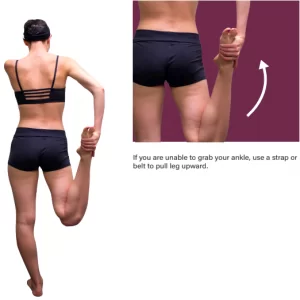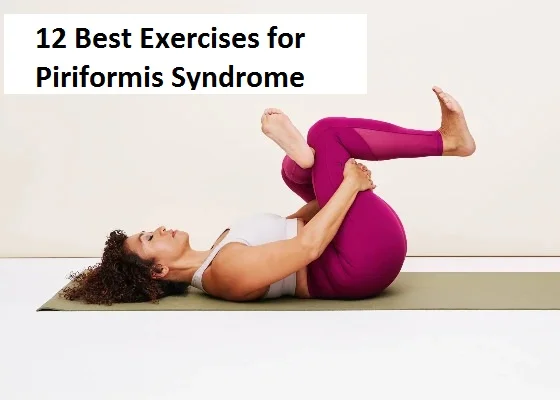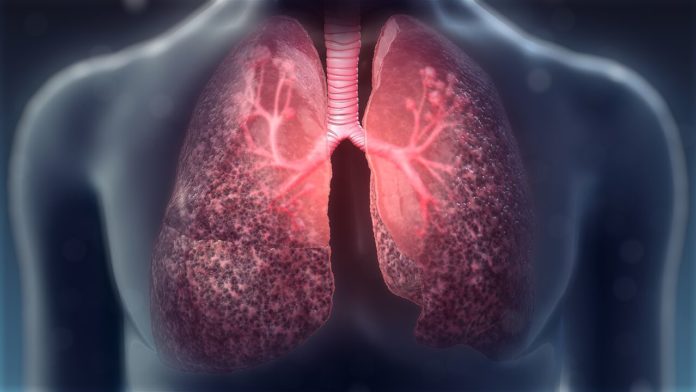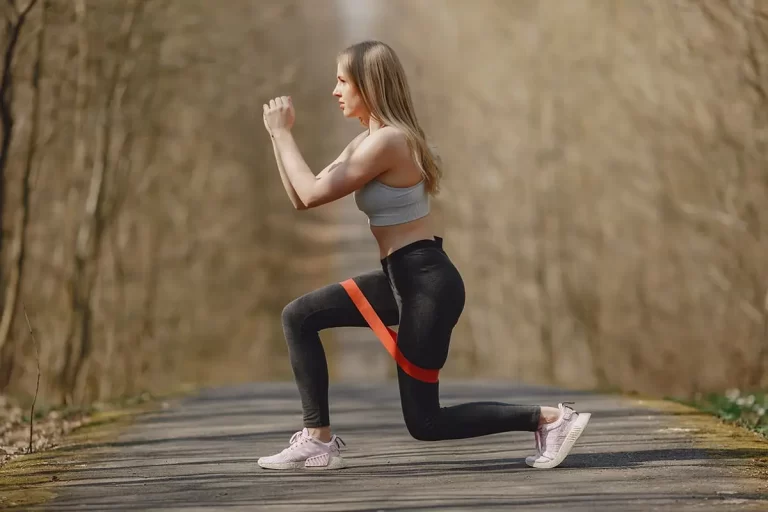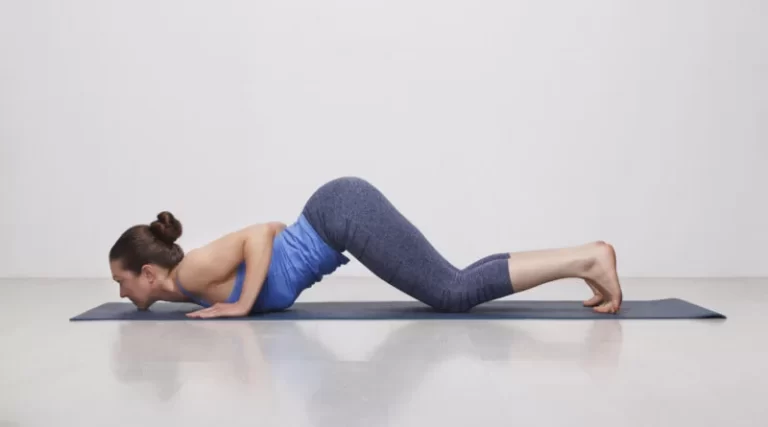23 The Best Lower Chest Exercises
Building a well-defined and balanced chest involves targeting different areas, including the lower chest. The lower chest can be a challenging area to develop, but with the right exercises, you can achieve a more complete and aesthetic chest appearance.
Incorporating a variety of lower chest exercises into your workout routine helps ensure comprehensive muscle engagement and growth.
Introduction
Various pectoral muscle strengthening exercises are available for those who wish to build their lower chest muscles. Cable crossovers and incline pushups type exercises that target the lower chest. For good reason, Making A Huge Chest is among the most active guys in the gym.
The pectoral muscles, also called the pecs, give the chest its form and appearance. They also have control over several arm motions, such as flexion, rotation, and adduction—bringing the arm in toward the body’s midline. The pecs consist of two muscles. The fan-shaped pectoralis major muscle extends from the collarbone and chest to the upper arm bone. The pectoralis minor forms a triangle that extends from the ribcage to the scapula, sitting beneath the pectoralis major. To develop their pecs, people might engage in workouts that work the entire chest area. Specific areas of the chest can be worked on using different lifts.
The desire to have a toned chest is something that many people work toward. Making the arms appear toned on the lower half is very important. Although your lower chest appears robust, it enhances the overall aspect of your chest and gives it a more defined appearance. You will be able to develop great strength and a toned upper body by performing the lower chest workouts.
When compared to lifting free weights with your body strength, using a cable system will allow you to lift larger weights.
Why Lower Chest Muscles Are Important?
Pay attention to your lower chest if you want to develop a strong chest with well-rounded pecs. Most guys mainly work on growing their upper and mid chest areas, neglecting to strengthen their lower chest muscles. The issue is that this regimen won’t result in the pecs of your dreams!
The importance of lower chest muscles is due to two factors:
- Aesthetics: You can achieve the bodybuilder aesthetics you desire by adding weight to your total chest through a muscular and sculpted lower chest.
- Function: When it comes to lifting, pushing, and moving around in your daily life, your lower chest muscles are essential.
What Muscles Make Up the Lower Chest:
Your chest is a broadened, superficial muscle with numerous attachment sites that run at various angles. It’s critical to comprehend their functions to build a stronger chest. The pectoralis minor & major muscles are the two muscles that make up the chest.
- Pectoralis Major: On the anterior aspect of the thoracic rib cage is the big superficial muscle known as the pectoralis major. consists of two main heads: the sternal head, located in the middle to lower chest region, and the clavicular head, located in the upper chest.
- Pectoralis Minor: A peripheral muscle close to the pectoralis major muscle on the anterior chest.
Benefits of Training Lower Chest Muscles:
- Improved stability in the shoulders
- Improves general strength
- Expands the arms’ and shoulders’ range of motion
- Chest muscles’ lengthening and strengthening.
- Improved Posture: The chest, one of the largest muscles in the upper body, is crucial to supporting excellent posture because the position of your shoulders is determined by the strength of this muscle. The entire shoulder joint is stabilized by the pecs, the upper back, and the shoulder.
- Better Breathing: Expanding and extending the muscles in the chest facilitates deeper breathing. Your capacity to breathe deeply will be impacted if your pecs are tight or short since they are connected to your ribcage, which expands with each breath.
- Improved Athletic Performance: Your pecs, which are your hugging muscles, can help you tackle and repel opponents when you’re hitting a tennis ball or hurling a football or baseball with more force and speed.
- Correct Muscle Imbalances: To achieve the highest possible development of your chest, you need to be hitting it from every angle. It will also assist you in preventing any muscular imbalances between your pecs and your anterior-posterior (back).
How You Can Train Your Lower Chest:
The best thing you can do is concentrate on strengthening your chest muscles as a whole. certain studies do suggest that varying the angle of certain of these workouts may help your muscles better engage the lower chest; but, unless you’re an extreme bodybuilder, you’ll be better off working to build up the entire muscle.
Keeping that in mind, you can add these exercises into your training to focus on the chest and increase its size and strength.
Top Workouts for the Lower Chest:
In this guide, we’ll explore some of the best lower chest exercises that can help you sculpt and strengthen this specific area.
The best lower chest workouts are provided in this step-by-step instruction.
Chest dip
- Hang onto a dip station’s handles or a parallel bar.
- Raise yourself, but don’t overextend your elbows.
- Avoid locking your elbows in place and keep them pointing slightly outward.
- Maintain your feet behind your torso and tilt your chest forward.
- Once your triceps are parallel to the bar, lower your body.
- Return to the raised position by pressing up.
- Return to your neutral position after that.
- Next, unwind.
- Do this five to ten times over.
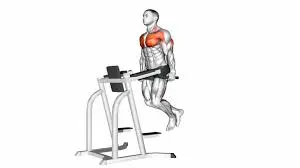
Cable crossover
- Select a weight that is in the middle range and put the pulleys high.
- Grasp a handle with both hands.
- Step forward and firmly plant your foot on the ground.
- Bring your torso forward and contract your core.
- Take a deep breath and spread your palms wide.
- Your chest should stretch, but don’t strain it excessively.
- For one full repetition, move your hands to your body’s midline.
- Return to your neutral position after that.
- Next, unwind.
- Do this five to ten times over.
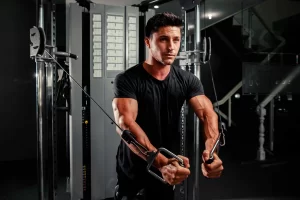
Decline bench press
- Set the bench at a declining angle, meaning your hips should be higher than your head.
- Lying on the bench, place your head beneath the barbell.
- Keeping your palms facing ahead and a little wider than shoulder-width apart, grab the barbell.
- Raising the bar off the rack, gradually lower it until it rests just below the nips.
- Raise the bar to the beginning position gradually.
- Return to your neutral position after that.
- Next, unwind.
- Do this five to ten times over.
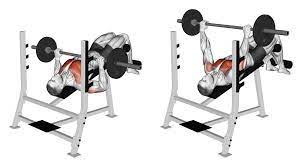
Incline push up
- Take a position facing the bench.
- Spread your hands shoulder-width apart on the bench’s edge.
- Put yourself in a plank position by extending your legs back until your back and legs are in a straight line.
- Maintain your weight on your toes.
- Bend your arms slowly to bring your chest closer to the bench.
- Do not forget to keep your arms and elbows close to your body.
- Having your elbows slightly bent, extend your arms and slowly push your body away from the bench.
- Return to your neutral position after that.
- Next, unwind.
- Do this five to ten times over.
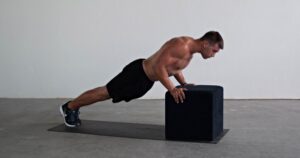
Seated Machine Fly
- To properly position the shoulder pads and arms, adjust the machine’s height.
- If you’re just starting, start with less weight.
- Keep your elbows at an angle to engage your chest.
- Take hold of handles individually, using a relaxed hold.
- Place your head on the headrest, your chest forward, and your hips and shoulder blades firmly planted.
- Reel handles to the chest and maintain a steady stance.
- Squeeze your pecs together as though you’re going to punch each other.
- Envision embracing the trunk of a tree with your arms.
- To avoid getting hurt, don’t overextend your arms.
- Steady your shoulders to avoid throwing.
- Re-extend arms, draw grips in, and keep your chest engaged.
- Return to your neutral position after that.
- Next, unwind.
- Do this five to ten times over.
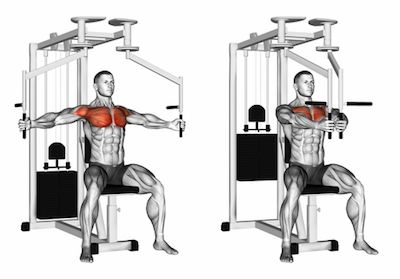
Straight bar dip
- Arrange a rack or bench press station high enough for you to be able to dip onto a barbell with your feet raised off the floor or loaded with big weights.
- Put your hands on the bar with a shoulder-width grip, bend forward, and press up.
- Reduce gradually.
- Return to your neutral position after that.
- Next, unwind.
- Do this five to ten times over.
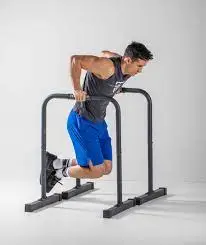
Jackhammer Pushdown
- As you would do a typical triceps pushdown, attach the short straight bar handle to the cable pulley machine on the high setting.
- Facing the machine, take a step backward.
- Hinge your hips forward slightly so that your body is pushing toward the wire while maintaining your legs firmly planted and erect.
- With your elbows spread wide to the sides and your palms facing down, take an overhand hold on the handle.
- The elbow posture used in this exercise will differ from that of a typical triceps pushdown.
- Let your elbows come inward as you stretch them during the pushdown.
- As soon as your elbows are completely locked out, pause at the bottom of the hold.
- Imagine compressing the muscle fibers in your lower pecs.
- Allow your elbows to flare back and slowly return to the starting position while preventing the weight stack on the cable from falling outside.
- Next, unwind.
- Do this five to ten times over.
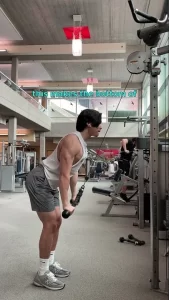
Kneeling X Press
- Grab a handle with each arm while kneeling close to a cable cross machine.
- To properly impact the lower chest and elicit a response, position yourself on your knees, place the handles at roughly chest level, and concentrate on the angle of your arms.
- Cross your hands over each other, push the handles down and in, and slant your upper body slightly forward.
- Return to your neutral position after that.
- Next, unwind.
- Do this five to ten times over.
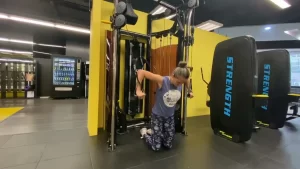
D2 flexion crossover
- You should aim for your opposite pocket in this exercise of cable crossovers, starting with your arm raised high.
- To reach there, you must first rotate your shoulder from an external to an internal position if you want to remove a sword from the opposite pocket.
- If you feel that the resistance provided by the band is insufficient when using it, you can raise the moment arm by maintaining your arm out straight, the band will perceive you as much more challenging.
- Keeping the arm long, extend it over the rib cage and bring it in.
- You’re experiencing adduction along with the identical across and downward angle that we’ve been aiming for.
- To go back to the beginning, slowly and deliberately reverse the movement.
- Return to your neutral position after that.
- Next, unwind.
- Do this five to ten times over.
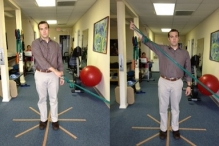
Incline twisting pushup
- Place a barbell at a low angle on a rack, then stand up straight with your hands on the bar and your torso angled downward toward the floor to perform a push-up.
- The incline pushup will target the lower chest more than the upper chest because of the arm’s angle.
- But by including the extra twist, we can increase the difficulty a little bit.
- To induce relative adduction of your arm over your chest underweight, rotate your torso away as you near the top of the pushup.
- As you spin into each rep, gravity is still pulling on you, which results in a loaded adduction.
- Return to your neutral position after that.
- Next, unwind.
- Do this five to ten times over.
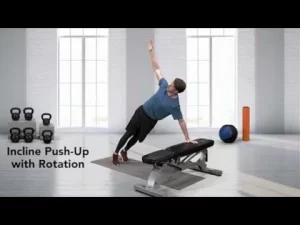
Decline cable dip
- Lying on a conventional bench with the angle adjusted slightly downward is the starting position.
- Next, slide forward.
- Then you’ll notice that you’ve automatically positioned yourself to strike the lower as soon as you grip the cable chest.
- Like in the Jackhammer Pushdown, your elbows are raised high.
- Your goal when pressing is to move the pressure straight down the length of your body.
- Return to your neutral position after that.
- Next, unwind.
- Do this five to ten times over.
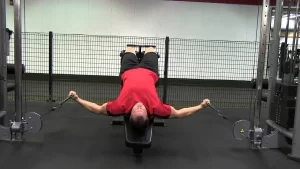
Decline dumbbell press
- Taking one dumbbell in each hand, lie down on the decline bench that has been adjusted to a 45-degree angle.
- The dumbbells should be positioned on your thighs with the palms facing inside.
- Never forget to maintain a flat back.
- Raise the dumbbells to your chest and extend your arms upward.
- The hands ought to stay pointing inward.
- Rotate your wrists so your hands are facing away while holding the dumbbells shoulder-width apart.
- First, bend the arms such that the elbows form a 90-degree angle.
- Dumbbells need to be positioned on the outside corners of the chest.
- Take a breath.
- As you release the breath, lift the dumbbells using your chest muscles.
- Pinch and hold for one or two seconds at the peak of the raise.
- Lower the dumbbells gradually.
- Return to your neutral position after that.
- Next, unwind.
- Do this five to ten times over.
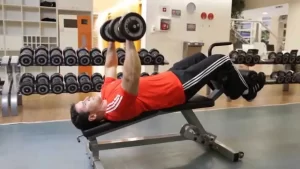
Parallel-bar dips (chest)
- Clasp the bars and raise your body above them with your arms.
- Bending your arms and bringing your torso forward, take a slow breath.
- Once you feel your chest somewhat extending, keep lowering your body.
- Exhale and raise your body back above the bars.
- Return to your neutral position after that.
- Next, unwind.
- Do this five to ten times over.
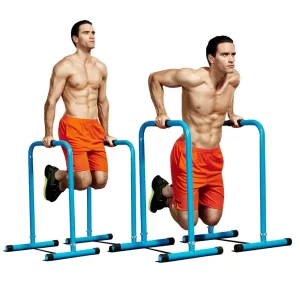
Dumbbell Hip Extension Floor Press
- Maintaining a neutral grip on a dumbbell in each hand, lie on the floor.
- Place your feet flat on the ground as you plant.
- Avoid putting your elbows in the way of your body.
- Put your feet solidly on the ground and pull your hips into extension.
- Raise the dumbbells until you can no longer move your elbows.
- When your upper arms make contact with the floor, slowly return.
- Return to your neutral position after that.
- Next, unwind.
- Do this five to ten times over.
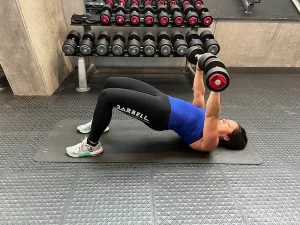
Decline Dumbbell Chest Fly
- Using your hands pointing inward, use a neutral grip to lift the dumbbells off the ground.
- Sit on a decline bench with the ends of the dumbbells positioned in your hip crease.
- Lay back with the weights near your chest to get into position.
- After positioning yourself, inhale deeply and press the dumbbells until you lock out at the top.
- Maintaining the angle at your elbow, slowly lower the dumbbells laterally while retracting your shoulder blades a little and opening your elbows.
- Squeeze your pecs together and return the dumbbells to their beginning position after the exercise has been reversed once they are at chest height.
- Return to your neutral position after that.
- Next, unwind.
- Start the next repetition and work your way through the set without letting the dumbbells come into contact with one another.
- Do this five to ten times over.
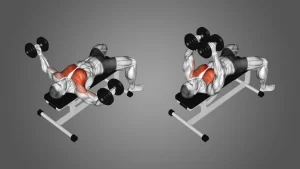
Stability Ball Push-Up
- Place your feet up on a stability ball and assume a push-up position with your arms slightly wider than shoulder-width apart.
- Novices can place their shins and ankles on the ball.
- On the other hand, roll out to your toes if you are strong enough.
- Bend your elbows to bring your chest closer to the floor while maintaining alignment of your hips with your torso.
- When your sternum is just above the floor, pause.
- To straighten your elbows once more, press through your feet.
- Return to your neutral position after that.
- Next, unwind.
- Do this five to ten times over.
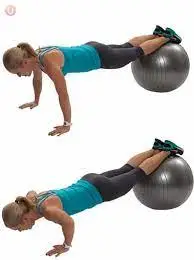
Cable chest fly pulser 100s
- Grabbing both cables in each hand, take a stance with one foot forward and one foot back.
- Bring your arms together in front of your body, lightly touching your fingers, while bending both elbows gently.
- Squeeze your pecs as hard as you can when your fingers touch, then switch between opening and closing your arms in a pulse, rapidly concentrating only on the chest.
- For a few repetitions, squeeze.
- Release your arms wide and slowly.
- Return to your neutral position after that.
- Next, unwind.
- Do this five to ten times over.
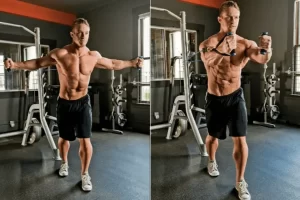
Bodyweight hanging dips
- Hold yourself up between two bars that are a little wider than hip-width apart.
- Maintain your feet off the ground and your arms extended but not locked out.
- Bend your elbows until they form a 90-degree angle, maintaining a tight core as you lower yourself.
- Press down with the hands to elevate the body to the starting posture without swinging.
- Return to your neutral position after that.
- Next, unwind.
- Do this five to ten times over.
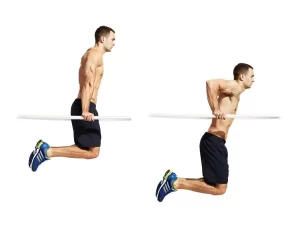
Stance Change Cable Fly
- Place yourself in the space between the two stacks and raise the pulleys on a dual-cable machine to your chest.
- Snatch up the handles.
- Raise your arms to your sides, palms facing forward, and take a few steps forward to put strain on the cables while maintaining a straight back and an engaged core.
- Place one foot in front of the other as you stand.
- Keep your elbows from bending behind your shoulders when you slightly bend them.
- This would be the appropriate place for you to begin.
- Draw large arcs with your hands facing each other in front of you, halting when they make contact, then slowly coming back to the starting position.
- Return to your neutral position after that.
- Next, unwind.
- Do this five to ten times over.
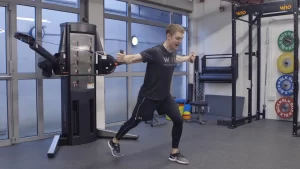
Decline push-ups
- Putting your back on the bench, drop to your knees.
- Put your elbows at a 45-degree angle, shoulders above your wrists, and your hands on the ground.
- Place your feet on the bench.
- Prepare your quads, glutes, and core.
- Keeping your back and neck straight, flex your elbows and drop your chest to the ground.
- To get back to the beginning posture, extend your elbows and push into the floor.
- Return to your neutral position after that.
- Next, unwind.
- Do this five to ten times over.
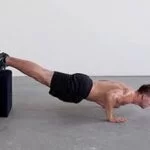
Dumbbell Pull-Overs
- To activate your chest, extend and maintain the tightness of your elbows.
- Select a bench that is level.
- With your back slightly arched, lie down.
- For stability, press your shoulder blades onto the bench.
- Tighten your thumbs underneath the dumbbells.
- As the weight presses you downward, extend your arms.
- To avoid elbow bend, push the weight back up while applying pressure with your outside hand.
- As you raise your arms vertically above your upper abdomen, puff up your chest.
- As you perform the movement, squeeze your pecs.
- Return to your neutral position after that.
- Next, unwind.
- Do this five to ten times over.
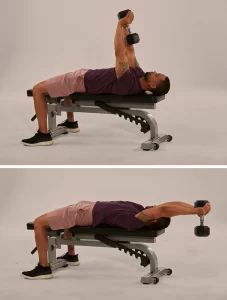
Seated Chest Press
- Bring the seat height up to your chest.
- Raise the machine to aim for the lower pecs.
- With your feet at a 90-degree angle, sit.
- To keep your spine neutral, press your head on the headrest.
- For a back arch, roll your shoulder blades into the seat.
- Straighten your wrists to prevent harm.
- Keep your elbows tucked in at a 30- to 35-degree angle.
- Grasp the bar externally and apply pressure on your chest.
- To activate your muscles, squeeze your pecs.
- When lowering the bar, allow your chest to expand, and then push after a two-second break.
- Return to your neutral position after that.
- Next, unwind.
- Do this five to ten times over.
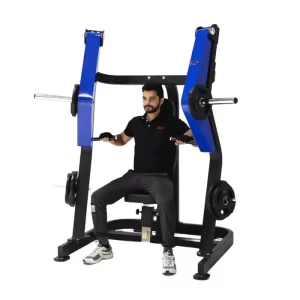
Medicine Ball Push-Up
- Bring both of your feet together behind you as you kneel on the ground.
- Bend forward slowly and place both palms on the medicine ball’s sides.
- Put your weight forward so that your shoulders are directly over the ball and your hands.
- If necessary, reposition your feet so that your body may extend fully without sagging.
- Contract your abs and core to tighten your torso.
- Bit by bit, start lowering your body toward the ball.
- Maintain a stiff torso at all times.
- To improve your balance, flex your thighs and glutes.
- Lower yourself till your chest nearly touches the ball.
- It is best to keep elbows near the body.
- To push yourself back to the beginning position, press into your palms and extend your arms.
- Return to your neutral position after that.
- Next, unwind.
- Do this five to ten times over.
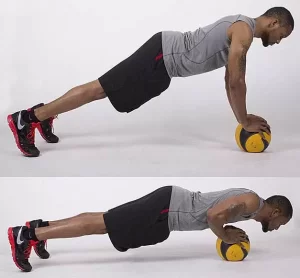
A few recommendations for strengthening your lower chest muscles:
You may exercise your lower chest safely and effectively by following these guidelines.
Here are some excellent pointers for developing your lower chest:
- Always warm up: A good 10-minute warm-up prepares your muscles to perform at maximum capacity when you lift weights.
- Do gentle stretches: After your warm-up, perform some light wall stretches to lower your risk of injury.
- Consider muscle balance: Don’t concentrate solely on one particular muscle group. Perform a superset to keep the front and rear of the body in balance. This should involve a lift that targets the latissimus dorsi, rhomboids, or trapezius after a lift that targets the lower chest.
- Sets and repetitions: Perform enough sets and reps so that after the last rep, the muscles are only tired, not sore.
- Alternate pec muscles: Work the pecs two to three times a week to alternate the muscles. Make sure you switch off between your upper, mid, and lower chest.
- Twice a week, strike your chest. Additionally, remember to provide enough time for recovery in between sessions.
When did the patient decide to stop taking part in the activity?
- If a patient has back pain, weightlifting exercises must be discontinued.
- If the patient feels uncomfortable doing this activity, especially if they have shoulder pain.
- A sleep-deprived person may decide not to exercise.
- You quickly spread.
- If you’re feeling uncomfortable or numb.
- It’s quite hot outside.
- Headache
- If you get pain during exercising, stop.
Preventing Typical Mistakes in Chest Exercise:
- Overdoing the Bench Press
- Poor Form for Bench Press
- Improper Incline Press Form and Imbalance
- Keep your motions smooth to avoid jarring movements.
- Keep the weights from bouncing off your chest.
- Refrain from overarching your back.
- A spotting device should be used for heavyweights.
Summary
To develop a well-balanced body, it is best to corporate these exercises within a full-body strength training program. When performing these exercises, people should keep in mind to concentrate on performing each action with the correct form and technique.
By not speeding through sets and refraining from using excessively heavy weights, people can prevent injury. These lower chest workouts can help you achieve your goals, whether they are strength- or pec-related. Just make sure to vary up your workouts and allow your body to recover between sessions.
When executed correctly, they work the lower chest. It’s crucial to refrain from working out the same muscle parts repeatedly since your muscles require time to recover from a strenuous exercise regimen. These exercises can help liven up a typical chest workout and provide the size and shape needed to flaunt your lower third.
You can achieve the desired outcomes in your lower chest improvement journey by including all of these lower chest workouts into your fitness regimen with good form and gradual growth. You also need to realize that reaching your fitness goals requires a balanced average chest education plan, appropriate weight, and consistency. You must exercise your upper, mid, and lower chest separately if you want to develop a muscular chest. Thus, be careful to give every muscle group the proper amount of training.
Whatever your goals are, never forget to keep up the excellent form and advance yourself whenever and when it’s right. Always get medical advice before beginning a new fitness regimen, especially if you have any pre-existing medical conditions.
FAQs
The lower pectoral muscle’s abdominal head’s fibers run up and out at an angle from bottom to top, toward your humerus, and this is the path you need to take to strengthen your lower chest. We must select workouts that carry our arms down and across the chest to target this area of the lower chest and develop muscle growth. Bodyweight workouts, dips, cable chest exercises, and variations on the bench press can all fall under this category.
Chest dip
Cable crossover
Decline bench press
Incline push up
Jackhammer pushdown
Parallel-bar dips (chest)
Stability Ball Push-Up
You’re probably not selecting the proper lower chest fiber exercises if your lower chest is not developing, is sagging, or lacks shape. We must select exercises that require us to bring our arms down and across our chest to target this area of the lower chest.
For defined pecs, the top five lower chest exercises are as follows;
Chest dip.
Cable crossover.
Decline bench press.
Incline push-up.
Seated machine fly.
To target your lower chest fibers, the Incline Pushup angles your body upward while angling your arms downward at a 45-degree angle.
A more challenging exercise for the lower chest is the chest dip. You’ll still need to utilize dip or parallel bars, but this workout is different in that you’re not hitting the triceps as much as others do. You must angle your movement to attack the lower chest.
Dumbbell flies, push-ups, chest dips, and incline bench presses are a few efficient workouts. The healthy development of the chest muscles that results from these exercises can help minimize the appearance of a gap between the pecs.
Push-ups are a popular upper body exercise used in the training regimens of bodybuilders, casual gym goers, athletes, and people recovering from particular injuries. Although it’s commonly perceived as a chest exercise, it also targets the pectoralis major and minor, triceps, anterior deltoids, and core muscles.
Exercises for the Defined Pecs: Lower Chest
Importance.
Hanging dips.
Dumbbell chest flys.
Dumbbell bench press.
Chest fly pulser 100s.
You should usually practice three to four chest exercises per session if you aim to enhance muscular hypertrophy and grow your chest; if your goal is to improve strength, you should simply perform two to three exercises.
While some people could find it simpler, others might find it more difficult to develop their lower chest. On the other hand, adding lower chest movements, such as dips, may be advantageous. Dips are a type of complex exercise that work the shoulders, triceps, and chest.
The Decline Bench Press: An Effective Exercise for Your Chest
The bench is adjusted to a decline of 15 to 30 degrees for a decline bench press. As you push weights away from your torso, this angle puts your upper body on a downward slope, engaging your lower pectoral muscles.
The pectoralis major is a large, fan-shaped, or triangular convergent muscle of the human chest, derived from the Latin pectus, which means “breast.” It is located beneath the breast and comprises the majority of the chest muscles.
Chest weight training is not a good choice because your chest muscles need to recover from exercise for a few days to grow and repair any damaged tissue. It is preferable to have one cheat day, or even two, each week.
An imbalance of upper and lower chest muscles
This imbalance, which is frequently inherited, suggests that one area of the chest may be more difficult to develop than the other. However, a more balanced chest can be achieved with specific exercise and the correct nutrients.
Yes, three chest exercises per week is more than enough to bulk up your chest. It all boils down to performing enough sets of each chest exercise to generate a strong pump and some pain the next day.
In general, with a well-designed workout program that incorporates targeted chest workouts, a balanced diet, and adequate rest, you should see obvious results in a few weeks to a few months. Significant muscle growth and definition, on the other hand, typically take many months to a year of concentrated effort.
48–72 hours
Depending on the person and the level of intensity of the exercise, chest muscles can take varying amounts of time to recuperate. It is generally advised to give yourself 48–72 hours to relax in between chest exercises in order to allow your muscles to fully heal.
It is possible to work out with weights twice in one day, but you should go cautiously to prevent overtraining and damage. Make sure you give yourself enough time to recover between the two sessions whether you decide to work your back and biceps or your chest and triceps in the same day.
On the day you are directly exercising a muscle group, it is customary to perform two to four exercises for that muscle group. So, for each muscle group in a given program, you could perform 4–16 different exercises, depending on how often you train each week (the more workouts per week, the more varied exercises you can include).
Daily dips can put a lot of strain on your joints and muscles, increasing your risk of overuse injuries. Giving your muscles at least 48 hours of rest in between workouts that focus on the same muscle groups is generally advised.
Exercises targeting the lower chest can be advantageous for several reasons. They first aid in posture correction and chest muscle strengthening. Doing routine tasks like lifting weights or carrying groceries may become simpler as a result. It can also lessen the chance of getting hurt while doing other workouts or sports.
You must work your entire chest to develop a full, attractive chest muscle. You must focus on the upper and lower regions of your chest in order to accomplish this. To put it simply, if you incorporate incline movements into your chest routine, your upper chest will receive more attention.
References
- Nash, S. L. (January 27, 2022). For defined AF pecs, here are the Top 5 Lower Chest Exercises. Lower-chest exercises on Greatist. https://greatist.com/fitness Reference within the text: Nash, 2022
- On October 18, 2023, Cscs, J. C. M., & Cscs, J. C. M. The Best LOWER Chest Workout. The finest lower-chest workout may be found at https://athleanx.com/articles/dip-plus. Citation within the text: (Cscs & Cscs, 2023)
- Barhum, L. November 17, 2023. What need to consume following a workout? /articles/322692 at medical newstoday.com Reference within the text: Barhum, 2023
- S. McLean (2023, Nov. 29). The Top 7 Lower Chest Exercises to Develop Full, Strong Pecs. BarBend. Best workouts for the lower chest: https://barbend.com/ Reference inside text: (McLean, 2023)
- A. S. M. C., Cnc, 2023 June 20. Chest Exercise: Decline Dumbbell Bench Press. Handbook for Marathons. Exercise for the lower chest: https://marathonhandbook.com/Citation within the text: (Cnc, 2023)
- Nash, S. L. (January 27, 2022). For defined AF pecs, here are the Top 5 Lower Chest Exercises. Greatist. Lower chest exercises: https://www.healthline.com/health/fitness-exercise/chest-fly-pulser-100s Reference within the text: Nash, 2022
- Which Lower Chest Exercises Are the Best? (As of now). Which lower chest exercises are most effective? https://www.icicilombard.com/blogs/health-insurance/mb Which Exercises Are the Best for the Lower Chest? n.d. is the in-text citation.
- Set (S. F.) n.d. The Top 7 Lower Chest Exercises to Tone Your Pecs. SET IN FOR SET. Lower-chest exercises: https://www.setforset.com/blogs/news/ Reference within the text: Set, n.d.
- S. (30 October, 2023). SQUATWOLF. https://blog.squatwolf.com/lower-chest-workouts/ The 8 Greatest Lower Chest Exercises for Defined Pecs In-text Reference: (2023)
- Image 5, Jase Stuart, The Better Body Coach, Exercise Database (Chest22) – Seated Pec Fly Machine (n.d.). Jase Stuart, the coach for better bodies. The machine is a seated pec fly machine. In-text Citation: (Jase Stuart, the Better Body Coach, Exercise Database (Chest22) – Seated Pec Fly Machine, n.d.)
- Image 6, 97007328: Virtual Shop. (n.d.). The product details page for Hatsalemk. live is 97007328. html. Reference within the text: (97007328 – Online Store, n.d.)
- Image 7, N. P. (April 17, 2019). How to Perform a Pushdown Jack Hammer. YouTube. Watch this: https://www.youtube.com/watch?v=-2OqsC_unTE In-text Reference: (2019)
- Image 8, C. T. (March 11, 2022). x push while kneeling. YouTube. /watch?v=JU6gb_qhmI4 on YouTube In-text Reference: (2022)
- Image 9, K. P. P. D. Cscs (2015) 26 Mar. d2 flexion (2) Prue Sports Performance & Physical Therapy. Prue Sports Performance & Physical Therapy | Personal Training and Physical Therapy NC Cary. http://www.pruept.com/6-physical-therapy-exercises-to-improve-your-golf-game/d2-flexion-2/Citation within the text: (Cscs, 2015)
- Image 10, Nov. 19, 2018; N. A. O. S. M. N. How to Rotate During an Incline Push-Up. YouTube. Yylb-sLWdm8 can be seen on YouTube. In-text Reference: (2018)
- Image 11, F. (August 16, 2013). YouTube: Decline Cable Chest Fly. jIt8nG02Ss0 can be seen on YouTube. Reference inside text: (2013)
- Image 12, M. A. (February 9, 2015). Chest Exercise: Decline Dumbbell Bench Press. YouTube. 0xRvl4Qv3ZY to watch on YouTube Internal Reference: (2015)
- Image 13, On October 23, 2023, Cooper, E., and Neudecker, K. How to Do Tricep Dips to Build Bigger, Stronger Arms. Male Health. Tricep dips: https://www.menshealth.com/uk/how-tos/a33643012/ Reference within the text: Cooper & Neudecker, 2023
- Image 14, November 23, 2022: Silverberg, A. How to Perform a Floor Press, Its Advantages, and Should You Do It? | Strengthlifting Methods.com. Strengthlifting Methods.com. Floor Press: https://powerliftingtechnique.com/ Reference within the text: Silverberg, 2022
- Image 15, Luna, D. (November 29, 2022). 7 Exceptionally Powerful Dumbbell Fly Substitutes (With Images). Motivate US. http://www.inspireusafoundation.org/alternatives-to-dumbbell-fly Reference within the text: Luna, 2022
- Image 16, On July 26, 2018, Cpt., C. F. Method for Doing Stability Ball Push-Ups. Restore Your Health | Chris Freytag. Strengthening Ball Push-Up Exercise: https://gethealthyu.com/ Citation within the text: (Cpt, 2018)
- Image 18, Hall, N. (October 26, 2023). The Ultimate Prison Bodyweight Workout by Charles Bronson. Man of Many. Charles Bronson’s ultimate prison bodyweight workout can be found at https://manofmany.com/lifestyle/fitness. Inside-Text Reference: (Hall, 2023)
- Image 19, W. P. T. G. (January 4, 2018). YouTube: Split stance cable fly. Watch this: https://www.youtube.com/watch?v=rNuonTYOg-Y In-text Reference: (2018)
- Image 21, K. A. F. CSCS (2023, March 2). The Dumbbell Pullover Exercise. BODi. Beachbody On Demand / Blog / Dumbbell Pullover Exercise Reference inside text: (CSCS, 2023)
- Image 22, Chest Press While Seated (Plate Loaded). (As of now). Seating Chest Press Machine: MSFFIT. https://www.msffit.com/products/ Citation inside the text: (Plate Loaded Seated Chest Press, n.d.)
- Image 23, N. Tumminello (2013) 25 June. Push-Up Modifications: Stack, Top 11 List. Push-up Variations 2/ https://www.stack.com/a Citation inside the text: (Tumminello, 2013)


